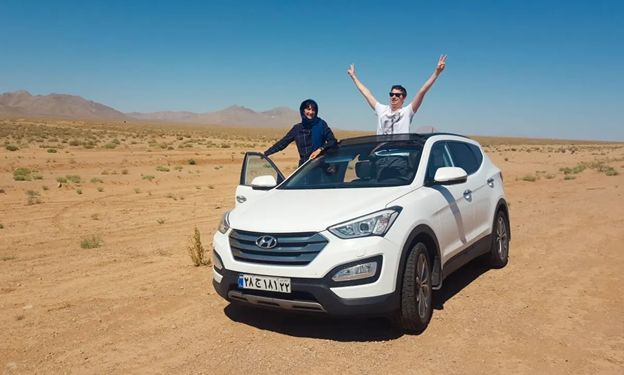
Driving in Iran offers the freedom to explore the country on your own terms, but it comes with unique challenges. Here’s a practical guide to help you navigate Iran’s roads safely and efficiently.
1. Know the Traffic Rules
Traffic Signs and Signals: Iran uses standard international traffic signs, but not all drivers adhere strictly to them. Be vigilant at intersections and traffic lights.
Right of Way: Generally, vehicles on main roads have the right of way, but this isn’t always observed. Approach intersections and roundabouts with caution.
Speed Limits: Speed limits vary by road type. In urban areas, the limit is typically 50 km/h, while on highways, it can be up to 120 km/h. Be mindful of speed cameras, especially on major routes.
2. Navigating Different Roads
City Driving: Urban areas, especially Tehran, can be congested with unpredictable traffic. Defensive driving is essential. Watch out for motorbikes weaving between cars and sudden lane changes.
Highways: Highways are generally well-maintained, but be cautious of vehicles overtaking from both sides. Keep an eye on trucks, which often move slower than the rest of the traffic.
Rural and Mountain Roads: Roads in rural areas and mountains can be narrow and winding. Drive carefully, as these roads might lack guardrails and have sharp turns.
3. Managing Traffic Conditions
Rush Hours: Traffic in major cities can be intense during rush hours (typically 7-9 AM and 4-7 PM). If possible, avoid driving during these times.
Parking: Finding parking in cities can be challenging. Use designated parking areas where possible, and avoid no-parking zones to prevent fines or towing.
4. Safety Measures
Seat Belts: Seat belts are mandatory for all passengers. Ensure everyone is buckled up before starting your trip.
Fuel: Gas is affordable, but stations can be sparse in remote areas. Keep your tank topped up, especially before long journeys.
Emergencies: For emergencies, dial 110 for police or 115 for medical services. Keep essential contact numbers handy.
5. Consider Renting a Car
Do you want to explore the country at your own pace? Consider Car Rental in Iran. You’ll need an International Driving Permit (IDP) along with your national driving license. Choose a reliable vehicle, especially for long-distance or mountainous travel. Booking in advance, especially during peak seasons, ensures better rates and availability.
Last Word
Driving in Iran can be a rewarding experience if you’re prepared. Understanding local driving habits, being aware of traffic rules, and practicing defensive driving are key to enjoying your journey. Whether navigating bustling cities or scenic rural areas, driving gives you the flexibility to explore Iran’s diverse landscapes on your terms.









